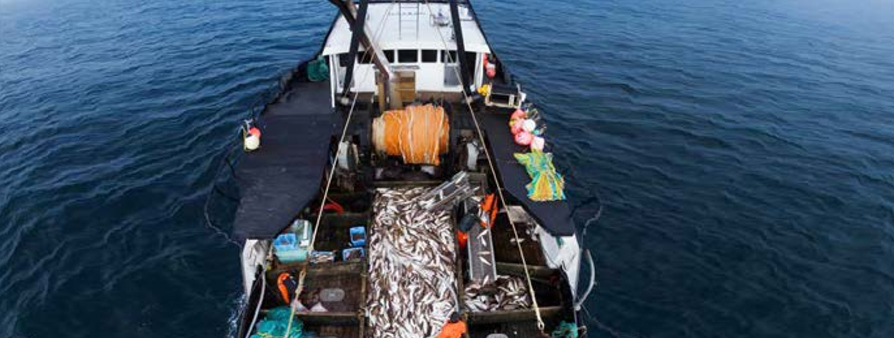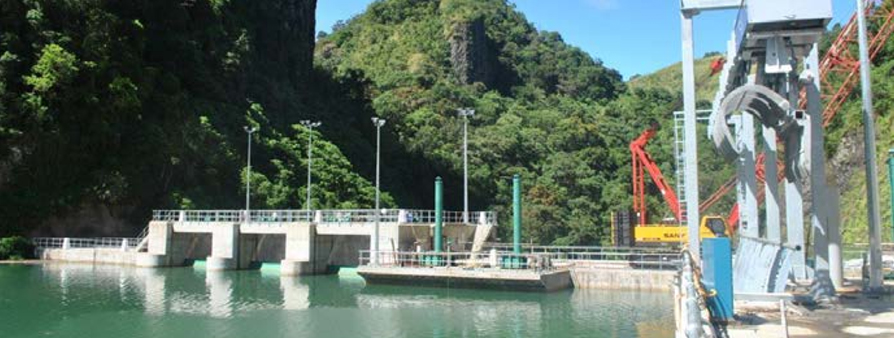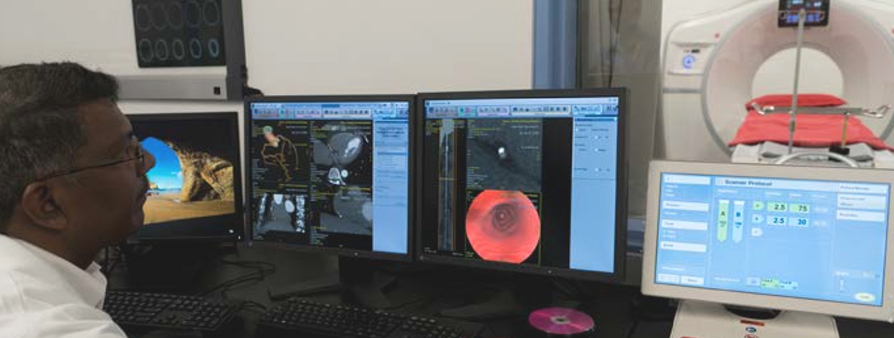


Agriculture has an immense potential in Fiji, our virgin soils and tropical climatic conditions allow for myriad of opportunities, targeting the domestic, local hotel industry and export markets.
The domestic market, particularly the tourism industry, offers the biggest opportunity for expansion in the agricultural sector. Agriculture contributes 10.5% of GDP.
Fiji has approximately 497,787 hectares or 28% of land available for agricultural purposes. Agricultural land use is broken down into temporary crop land, fallow land, permanent crop land, pastures, coconuts, natural forest, planted forest and non-agricultural land. The highest percentage of actual land use (37%) is for permanent crops followed by pastures (19%) and natural forest (17%).
The crop sub-sector is mainly driven by the root crops and horticulture industry. The major commodities are taro, ginger, papaya, pineapples and Bilateral Quarantine Agreement (BQA) commodities such as eggplant, okra and breadfruit. Taro and cassava are the most planted root crops with taro geared mainly for the export market. The livestock subsector is dominated by beef and dairy production.

Fiji’s pristine ocean boasts diverse resources of marine life species that ranges from finfish products such yellow fin tuna, big eye tuna, albacore tuna, marlin, swordfish, mahi-mahi, deep water fish like snapper and reef fish species such as sea-bream, trevally, groupers, coral trout and rock cods. Aquaculture products include prawn, seaweed, giant clam and tilapia farming
The fisheries sector, the third largest natural resource based sector in the economy, behind sugar and subsistence agriculture plays a vital role in the overall growth and development of the country.
In 2015 the sector grew by 3.6% mainly due to increased production in offshore marine fishing and beche-de-mer. This growth enabled the sector to 12% of total export earnings.
The main contributor to the sector is commercial fishing, especially offshore tuna catches. Other contributors include beche-de-mer, aquaculture and other aquatic-based produce. The main commercial tuna species include big eye and yellow fin. These are high value commodities that are largely destined for the Japanese and the USA markets.

For more information on incentives:
Fiji’s pristine ocean boasts diverse resources of marine life species that ranges from finfish products such yellow fin tuna, big eye tuna, albacore tuna, marlin, swordfish, mahi-mahi, deep water fish like snapper and reef fish species such as sea-bream, trevally, groupers, coral trout and rock cods. Aquaculture products include prawn, seaweed, giant clam and tilapia farming
The fisheries sector, the third largest natural resource based sector in the economy, behind sugar and subsistence agriculture plays a vital role in the overall growth and development of the country.
In 2015 the sector grew by 3.6% mainly due to increased production in offshore marine fishing and beche-de-mer. This growth enabled the sector to 12% of total export earnings.
The main contributor to the sector is commercial fishing, especially offshore tuna catches. Other contributors include beche-de-mer, aquaculture and other aquatic-based produce. The main commercial tuna species include big eye and yellow fin. These are high value commodities that are largely destined for the Japanese and the USA markets.

The geographical and geological setting of Fiji has attracted multinational exploration companies to invest and successfully prospect for mineral deposits including gold and mineral water.
Fiji is in the south-western Pacific and is a volcanic group of islands consisting of more than 300 islands with a fascinating geological setting within the Pacific Rim of Fire. Such setting generates various types of mineral deposit including gold, silver, copper, alumina and manganese. The current active gold mine has a mineral resource volume of 4.1million ounces of gold with current mineral reserve of 750,000 ounces of gold, which has been producing for 85 years.
Groundwater resources on the other hand, also show significant potential for mineral water production with multiple mineral water brands, including the household Fiji Water targeting the high-end niche markets overseas.

Fiji’s energy situation is characterized primarily by high reliance on imported fuels. Therefore, the Government is committed to reduce the reliance on imported fossil fuels by incentivizing energy generation through renewable energy sources in the country
Due to the Fijian Government’s significant investment in rural electrification initiatives over the last two decades, the majority of the population is connected to the national electricity grid. However approximately 10% of the total population is still without proper electricity supply to connect the rural population to the national grid in a sustainable manner.
Currently, over 60 percent of electricity generated is from renewable sources such as hydro, biomass, wind and solar energy. The government plans to increase it to 100% by 2036.

Manufacturing has an immense potential in Fiji. This sector as one of the most thriving sectors within Fiji’s growing economy includes textiles, garments, footwear, sugar, tobacco, food processing, beverages (including mineral water) and wood based industries.
In 2009 the Fijian Government initiated the “Fijian Made and Buy Fijian Campaign” to promote and raise the profile both domestically and internationally through a national branding strategy.
Manufacturing is now a major sector in the economy, having contributed an average of 12.7 percent of GDP in 2016. To ensure that the manufacturing sector contribution to GDP reaches 20% by 2020, the Fijian government is building a sustainable and globally competitive manufacturing sector through targeted assistance and a sound enabling environment for the private sector.

For more information on incentives:
Fiji’s Constitution embeds the right to health as a fundamental right for all citizens, and the country’s health care system consists of both the public and private sectors, with the private one increasingly complementing public services.
In Fiji, as elsewhere in the developing world, life expectancy is increasing. At the same time, more people are living with long-term, non-fatal conditions such as diabetes which require ongoing
monitoring and management. Demand for non-urgent (elective) surgical procedures as a result of growth in the prevalence of non-communicable diseases is also anticipated to increase.
In terms of major health infrastructure Fiji has three divisional hospitals, 18 sub-divisional hospitals, 84 health centres and 98 nursing stations around the country.

FIJI is becoming one of the most sought after production locations in the world. It makes good business sense to shoot in Fiji and for film-makers to take advantage of the beautiful diverse locations and the best incentive in the world, the 47% Film Tax Rebate.
Fiji is well known for its islands and its sea life, but as many more film makers are finding out, there so much more to the locations. There’s mountainous terrain, jungles, rivers, spectacular waterfalls, savannahs, lakes, rural and urban scapes, heritage buildings and towns, and a very rich mosaic culture of i-Taukei (indigenous Fijians), Indian, Chinese, Pacific and European traditions.

Fiji is well positioned to attract ICT investments, starting from the lower end and moving up the value chain. Fiji has managed to secure its position in attracting renowned ICT investors to locate their back offices to Fiji allowing Fiji to position itself as the hub of the Pacific.
With Fiji well established as the hub of the South Pacific. Its telecommunication network is the focal point for regional business activity. Fiji provides a world- class international connectivity via the Southern Cross Cable fibre optic networks which gives it a competitive edge in the globalised on-line world. The high speed network can now deliver a 5.4Tbps (capacity of new submarine cable system) fastest, most direct and most secure international bandwidth from Australia, New Zealand and Hawaii via the Pacific to the heart of the Internet in the USA.

Fiji’s renowned culture of hospitality and resourcefulness delivers exceptional value for investors. There are many examples of commercial success resulting from investment ventures by international partners.
The Tourism Industry in Fiji is largely regarded as an important driver for the Fijian economy. The tourism sector, which hosts more than 40% tourists visiting South Pacific countries each year, employs approximately 119,000 Fijians contributing above 30% of Fiji’s GDP. The industry offers a wide range of services and facilities to suit the needs of its markets ranging from eco-tourism to high-end tourism products. The growth in international visitor arrivals, especially from China, the fastest international market, anticipates conforming increase in capacity requirements and demand for new products, facilities and services, thus paving the way for local and foreign investment opportunities.
